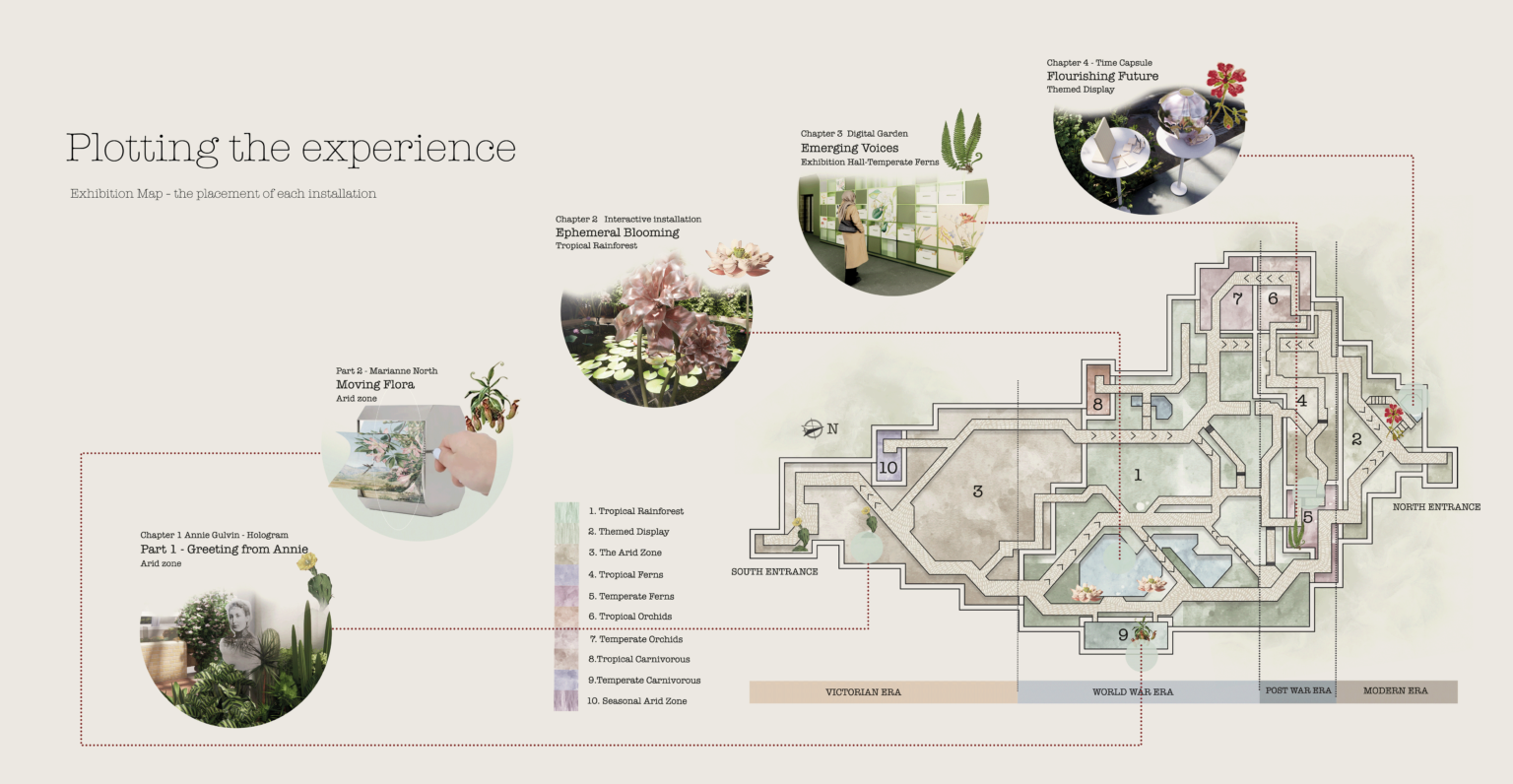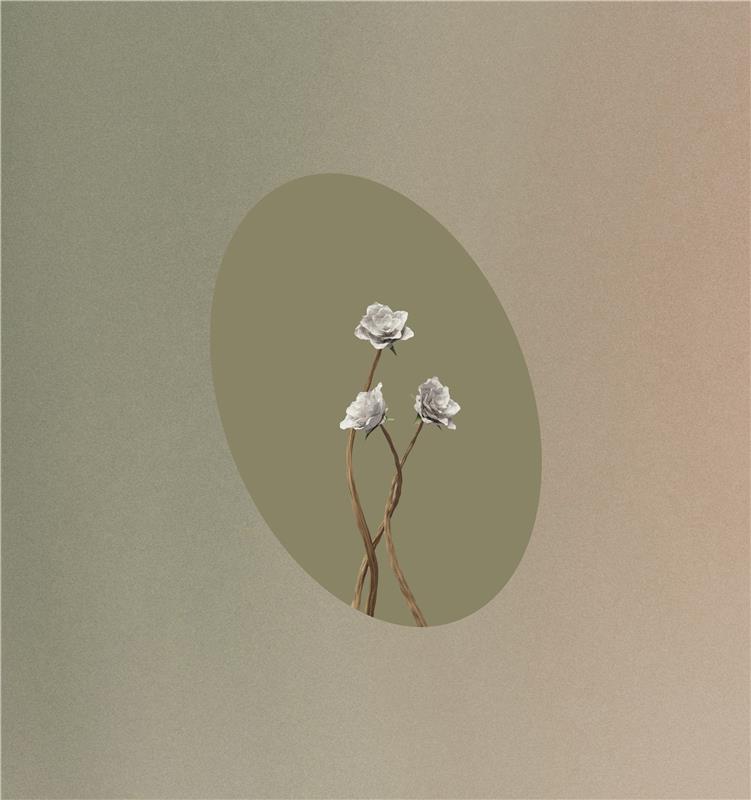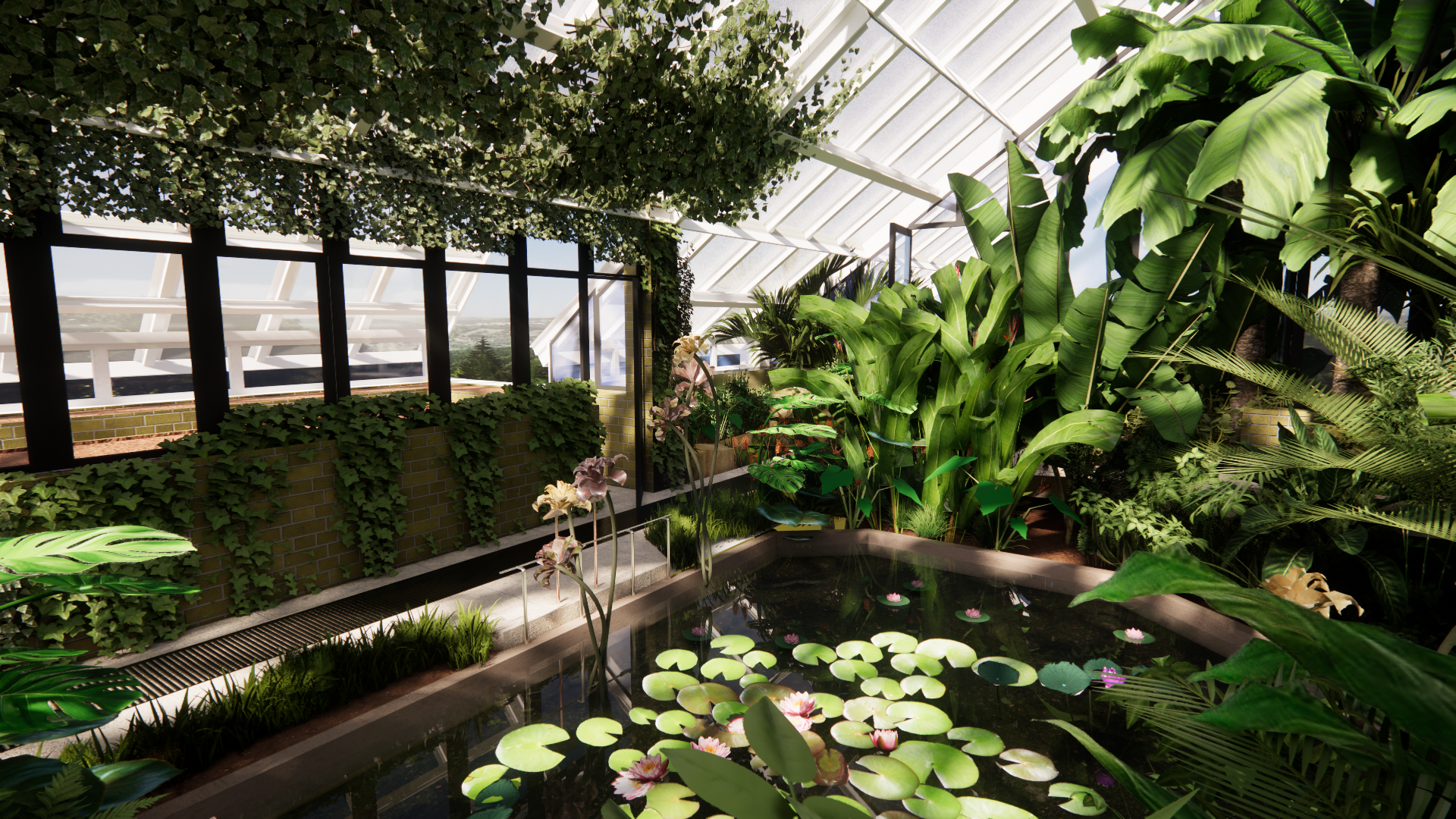Designed in collaboration with Viv (Hánqí) Li and Prachi Pansare
Software: Sketchup, Autocad, Enscape, Photoshop, and Premiere Pro.
Slow Blooming is an immersive tribute to the resilience, intellect, and legacy of female workers at Royal Botanical Gardens, Kew, unearthing their hidden histories and blooming them into public memory through sensory storytelling and spatial design.
Slow Blooming explores the social and cultural significance of female workers at the Royal Botanical Gardens, Kew. The project analyses historical records and botanical contributions, unearthing how gardens serve as both preservers and shapers of human experience. Through immersive installations in the Princess of Wales Conservatory, we bring to life the overlooked stories of these women while examining Kew’s architecture, microclimates, and cultural symbolism.
Slow Blooming amplifies women’s roles across science, botany, conservation, and reinstates their stories in public memory. Unearthing intersections of equity, expression, and conservation with Kew’s living history.
Visitors will learn about women’s stories and reflect on gardens as spaces of knowledge, identity, and ecological care. Each installation narrates a chapter of their journey through time. The series begins with the Victorian era, honouring Annie Gulvin, the first female gardener at Kew. Moving into the World War period, highlighting women’s pioneering roles during times of crisis. Transitioning into the Post-War era, marking their growing presence and influence. Culminating in the Modern era and envisioning the next generation of female horticulturists.
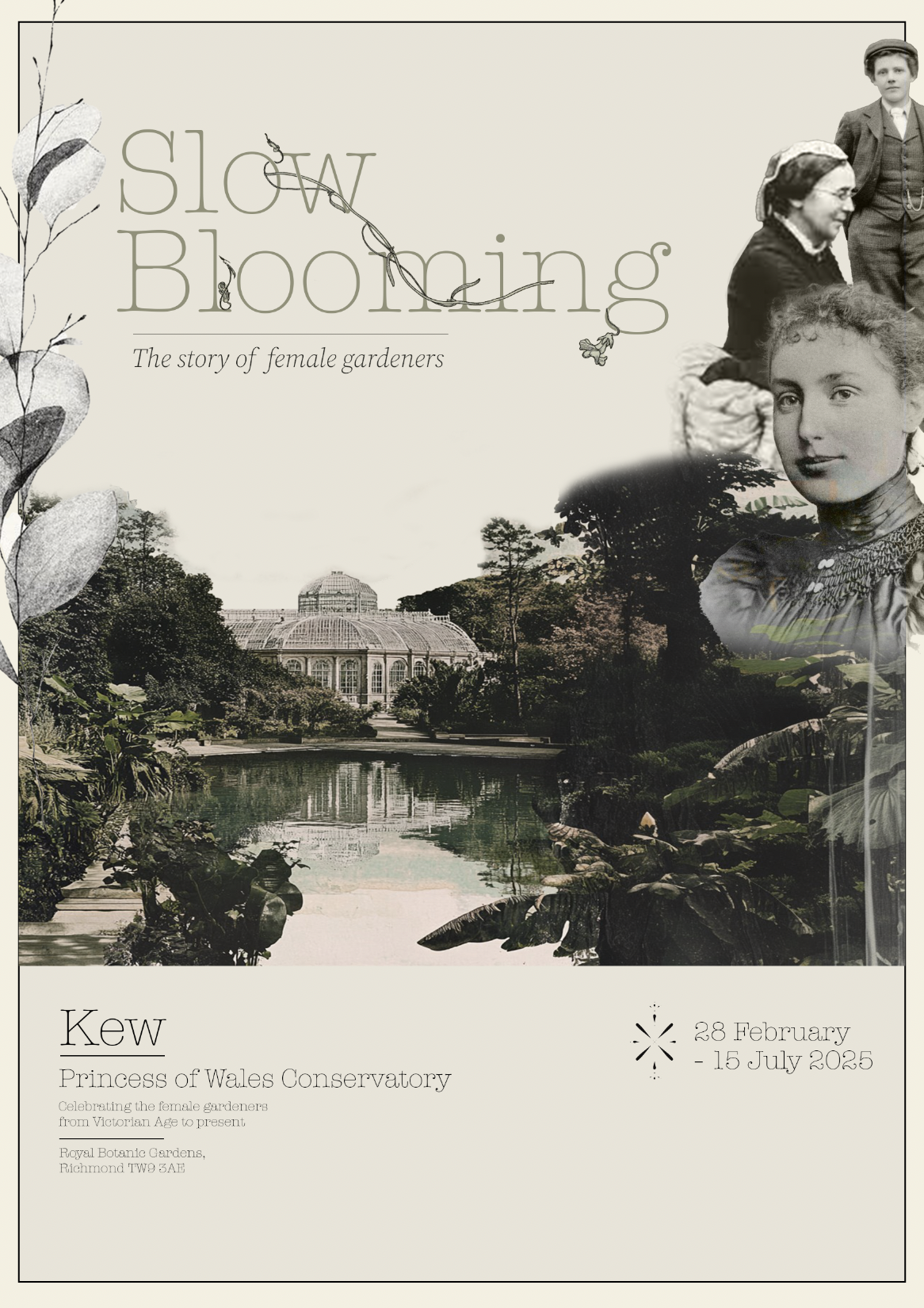
Why is the exhibition divided into eras?
“Slow Blooming” is not just a spatial journey it’s a temporal narrative. Each zone embodies a distinct chapter in the evolution of women’s contributions to horticulture, from overlooked labor to pioneering change.
By dividing the space into historical eras from the Victorian period to the modern day. The exhibition invites visitors to physically walk through time. Each zone introduces unique multisensory experiences that reflect the challenges, breakthroughs, and emotional landscapes of its time. The architecture of the exhibition grows more open, participatory, and reflective as the story unfolds mirroring the legacy of growth cultivated by generations of women.
Greetings from Annie
Greetings from Annie is the first installation of series giving introduction to exhibition and narrating her story being a first female Gardner in Kew.
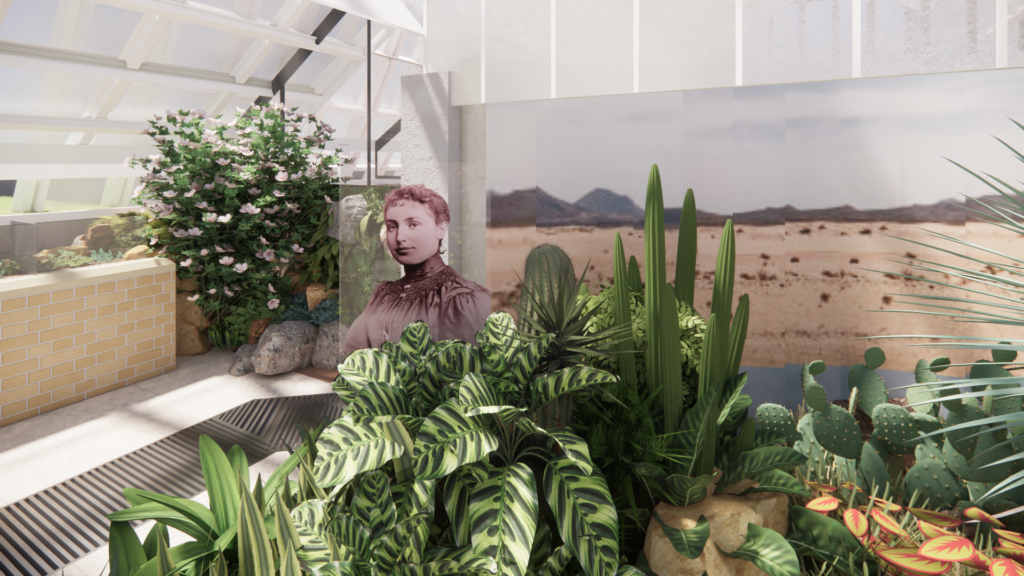
This immersive hologram brings the story of Annie Gulvin , one of Kew’s first female gardeners — vividly to life. Through light, sound, and narrative, the installation honours her pioneering role in a male-dominated field. It serves as a gesture of acknowledgement and gratitude, allowing visitors to metaphorically “stand along side her” and reflect on the long path towards equity and inclusion in horticulture. Her story becomes a seed for growth, reminding us how far we’ve come and how much still blooms from her legacy.
Ephemeral Blooming
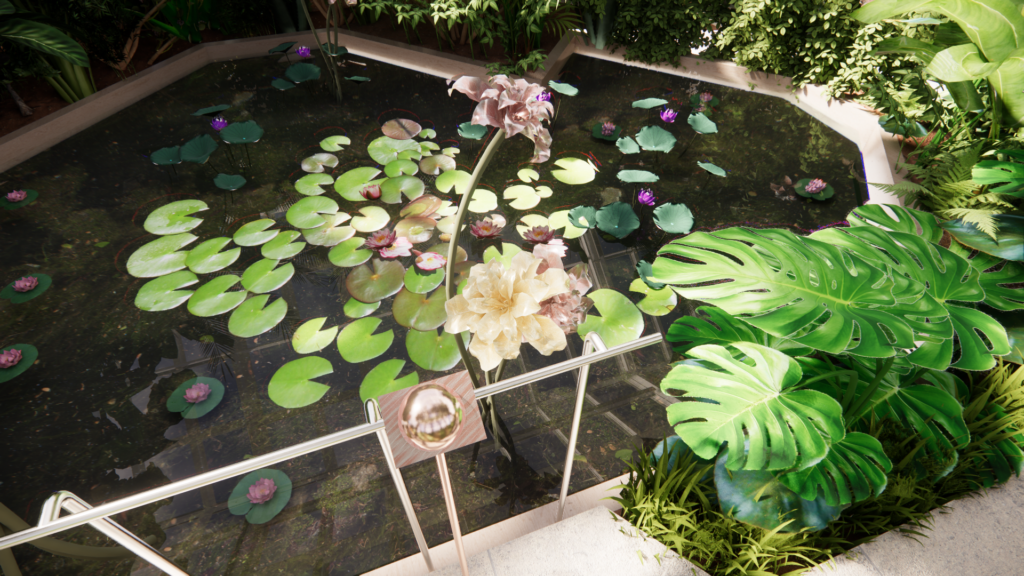
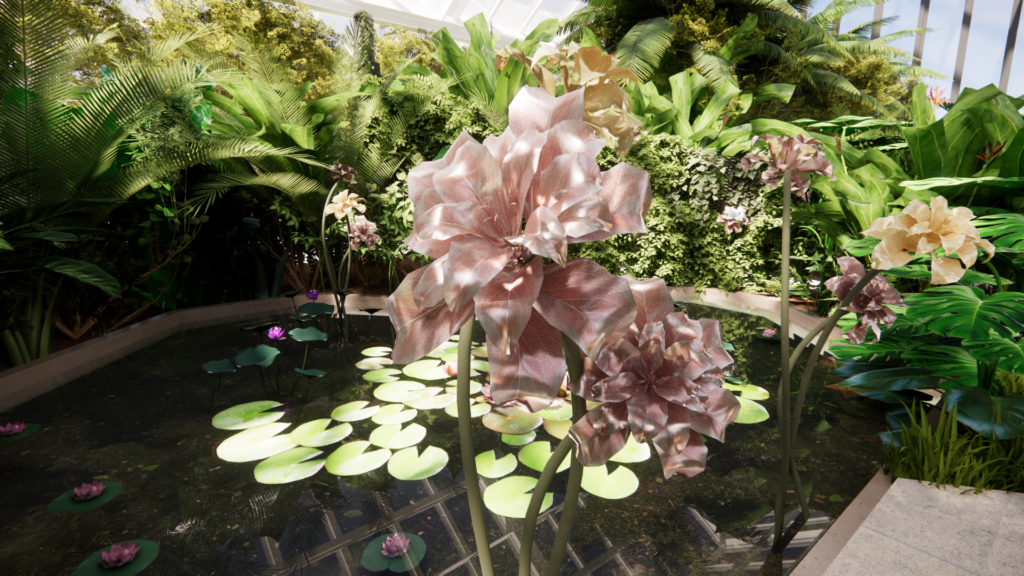
Inspired by wartime resilience, the design evokes the transient beauty of growth under pressure. As visitors crank, trigger, or activate the devices, the garden responds with light, movement, and sound — a metaphor for women’s unseen labour coming to life. This zone pays tribute to the countless women who stepped into horticultural and land-based roles during wartime. Their contributions, often temporary and undervalued, were vital much like a bloom that flourishes against the odds, then fades. Through this ephemeral experience, we invite reflection on the impermanence of progress, the fragility of recognition, and the strength found in cycles of renewal.
Ephemeral Blooming 360 Animation - have a look around
Emerging Voices
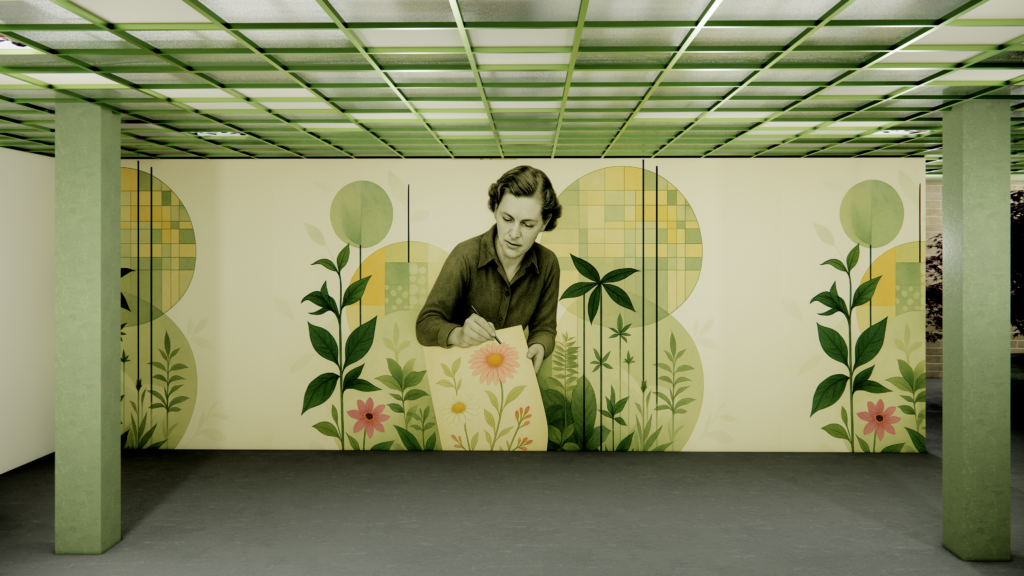
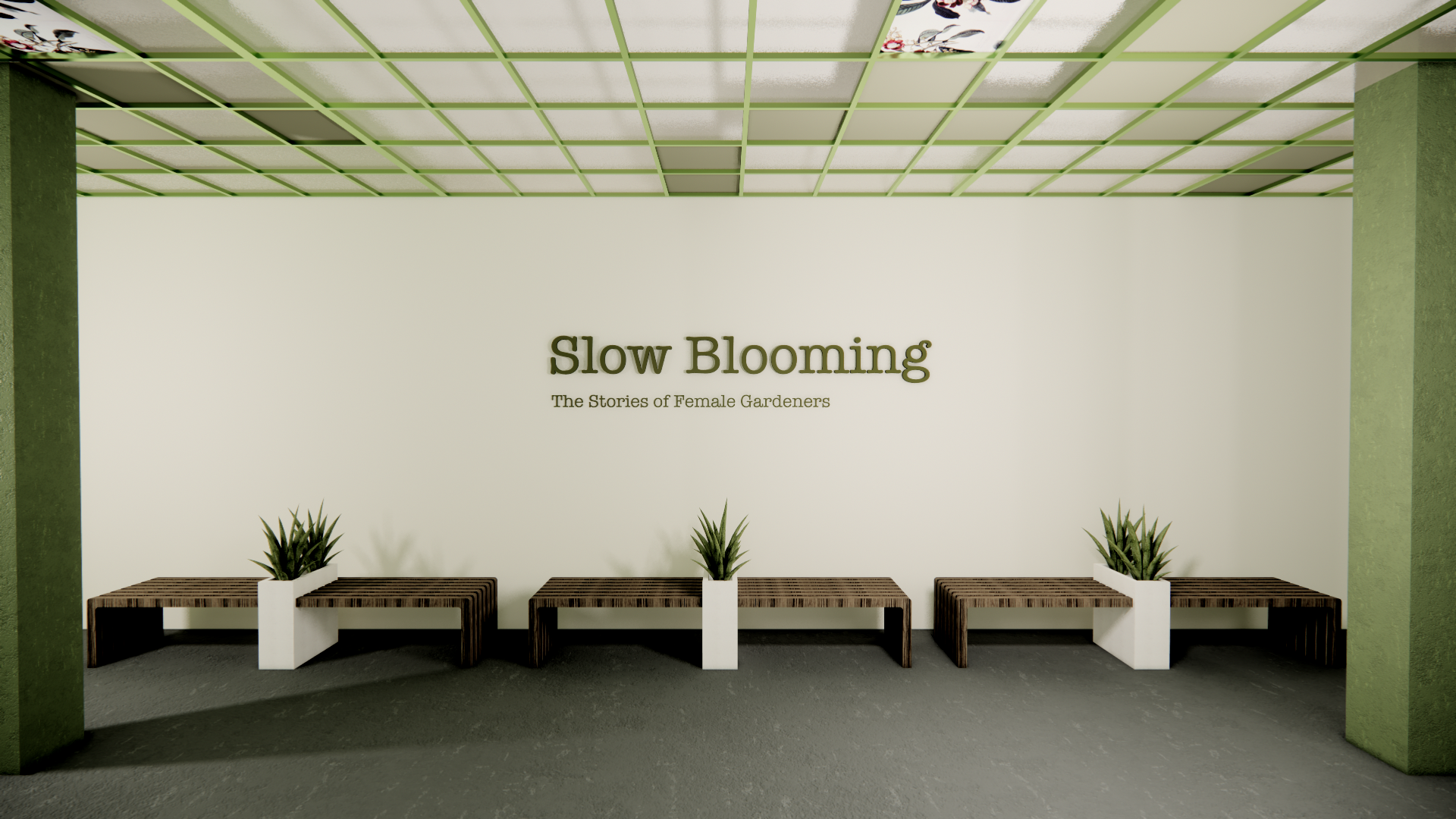
This chapter shifts from remembrance to recognition. As visitors step into the quiet intimacy of the lecture hall, they engage with archival visuals and interactive storytelling that amplify the voices of women who remained at Kew after the war not merely as temporary workers, but as lasting contributors.
It opens a discourse around women’s continued presence in the organisation: not only as caretakers or improvers, but as experts, researchers, and leaders. Through layered projection and blooming animations, the design makes visible what history often leaves in shadow the persistence of women who shaped the garden’s evolution long after the headlines faded.
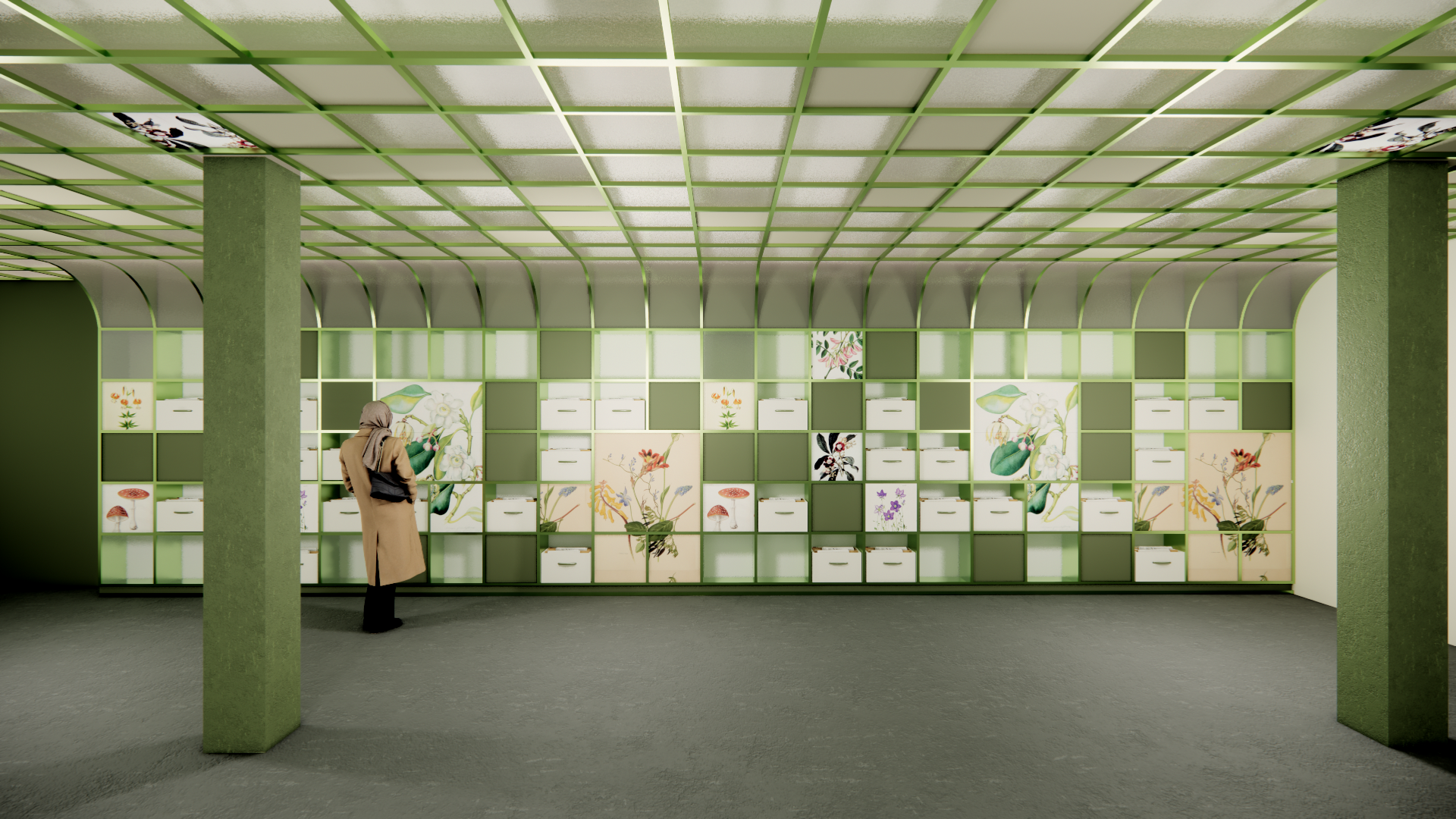
By opening drawers and touching screens on an interactive wall the post-war era archives are activated.
Flourishing Futures
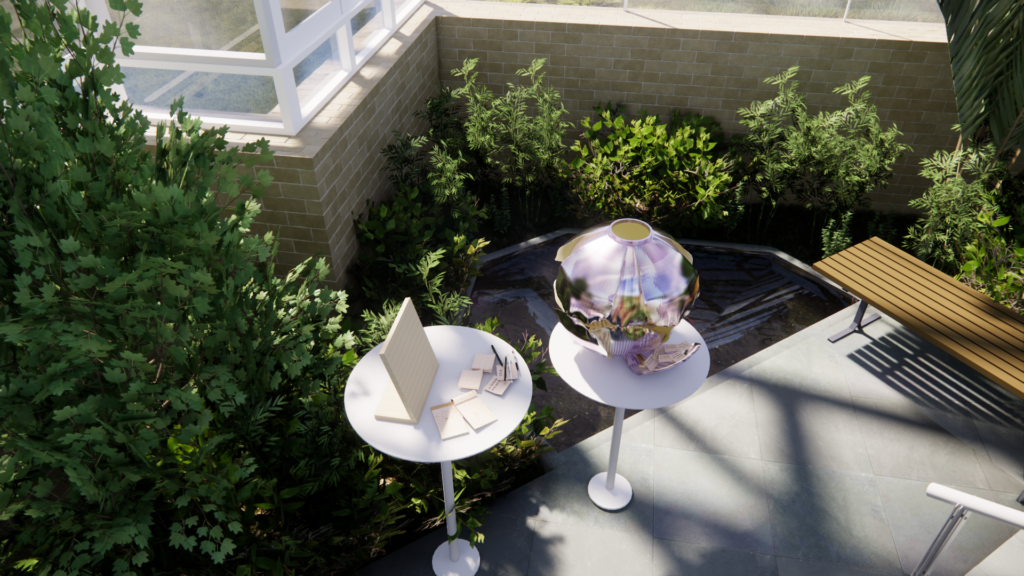
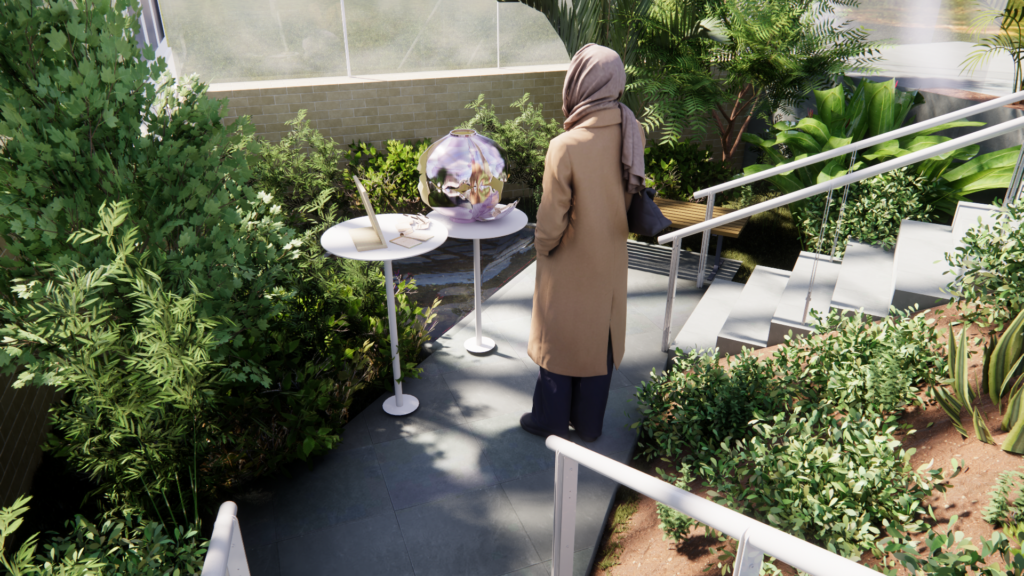
By adding paper notes to the sculpture, visitors help continue sharing and growing the female workers’ stories.
Flourishing Futures Live Image - have a look around
Once restricted to the margins, women’s presence within Kew and other horticultural organisations now shapes the future of biodiversity, sustainability, and botanical innovation proving that gardens flourish best when diversity is rooted at their core.
Here, design becomes dialogue. The pod encourage pause, listening, and reflection, while plantings evolve across seasons a reminder that the story of women at Kew is still unfolding. This is a space to celebrate belonging, presence, and possibility where futures flourish through the act of listening to each other.
